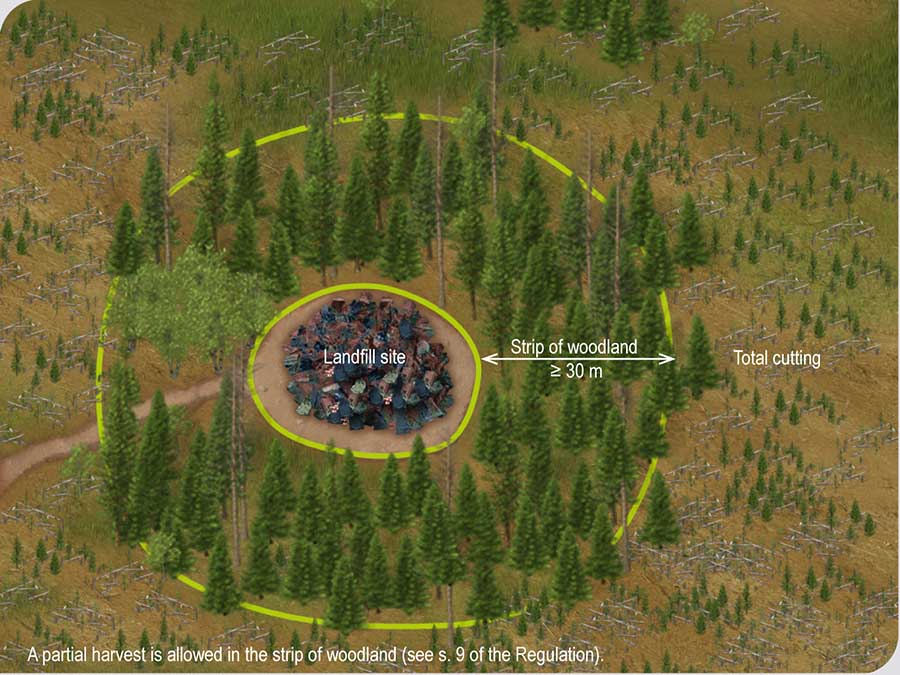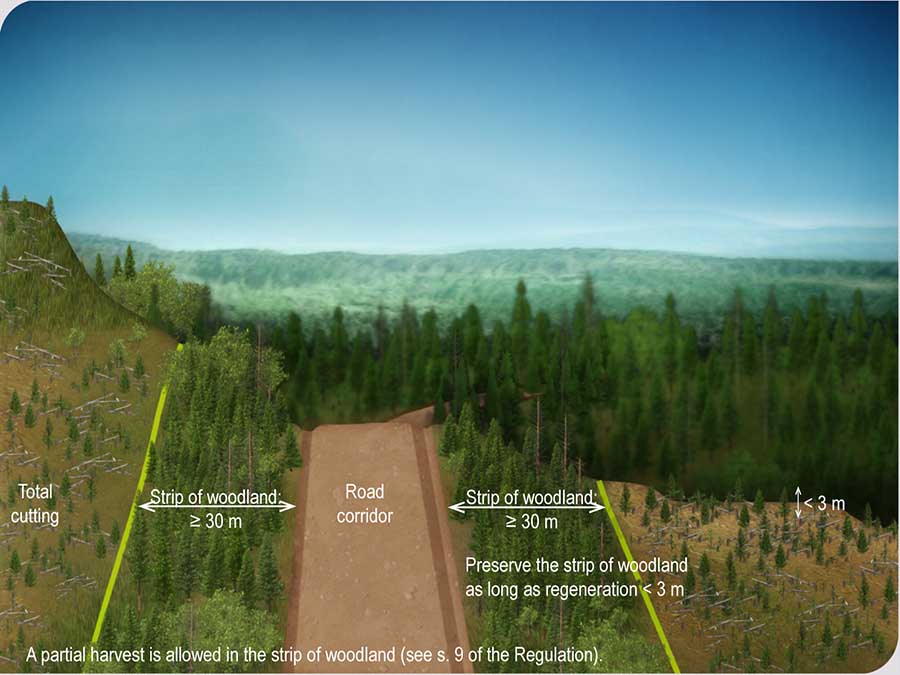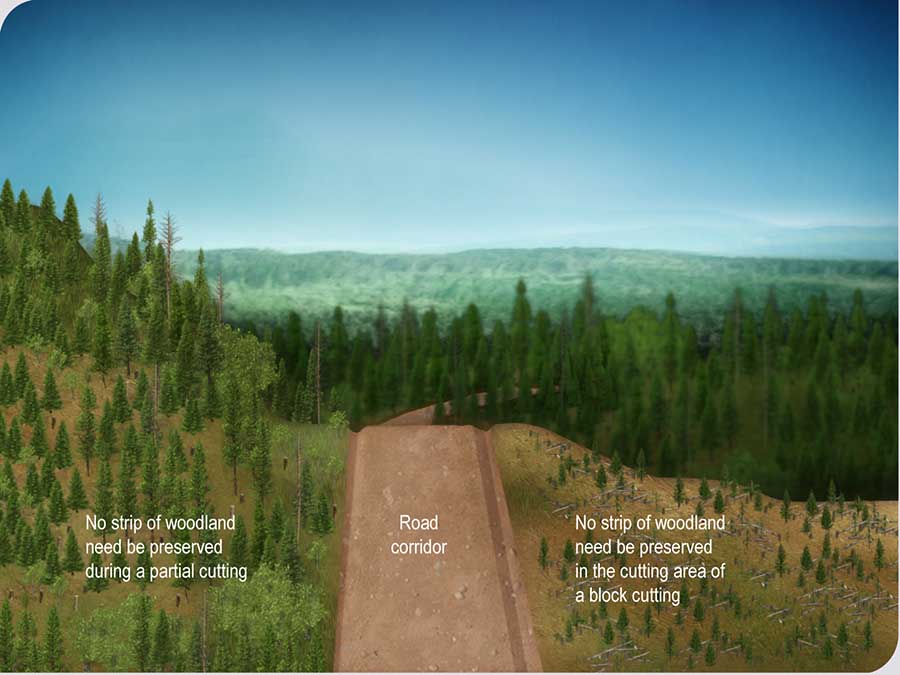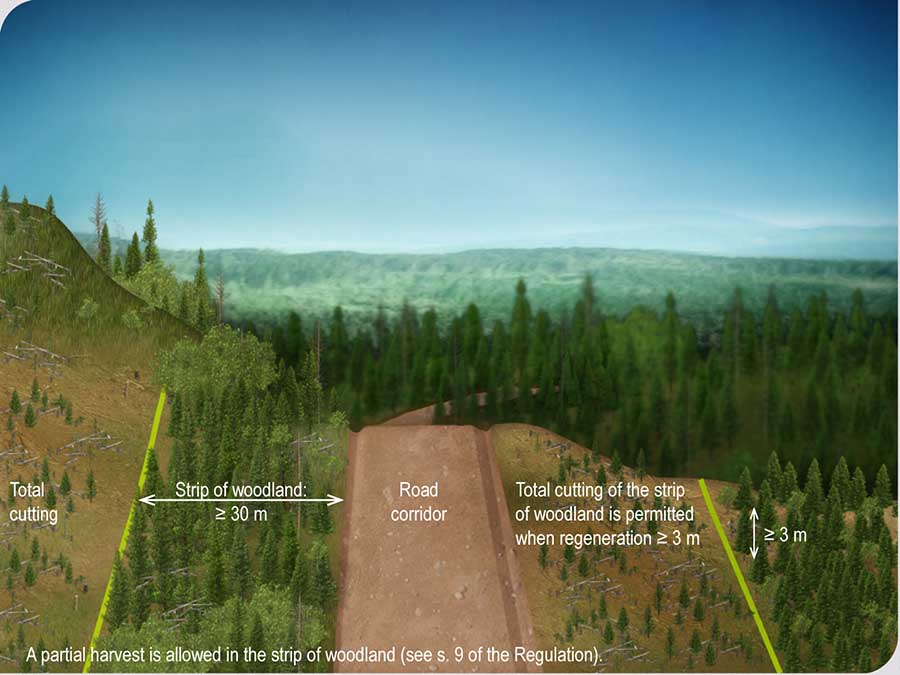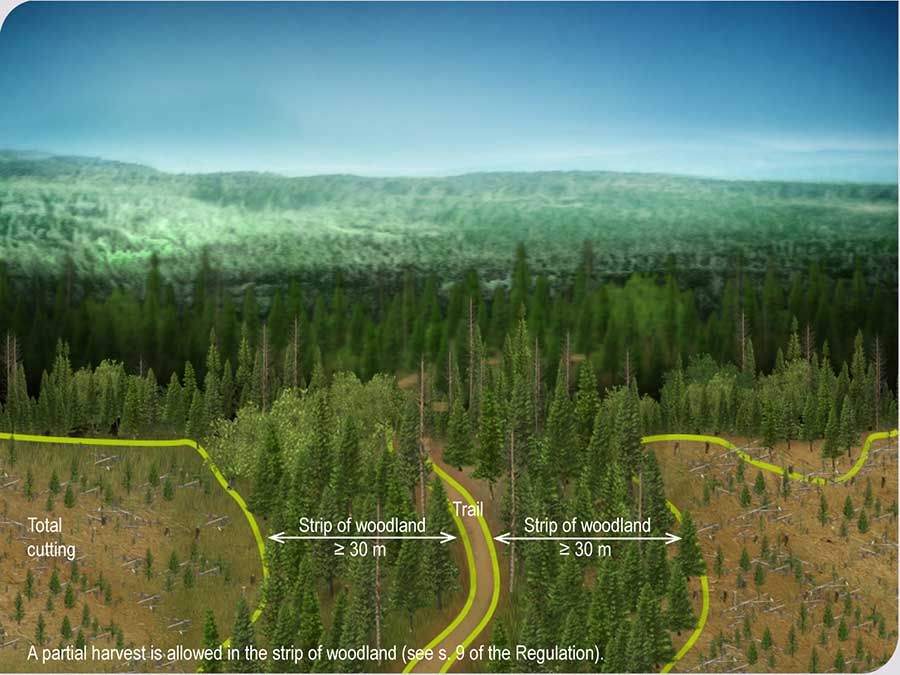Chapter II – Protection of particular places and territories
Section I – General
§2 – Strips of woodland
Section 8
A strip of woodland at least 30 m wide must be preserved around the following places and territories:
- a sugar bush;
- a landfill;
- a burial site.

1
Objectives
- To preserve the integrity of a particular place or territory
- To reconcile the various activities that take place in the forest
- To protect the investments made in a particular place or territory
- To allow certain forest development activities in or near a particular place
Additional information
A sugar bush operated for acericultural purposes (subparagraph 1 of the first paragraph) is governed by a sugar bush management permit for acericultural purposes issued pursuant to the Sustainable Forest Development Act  .
.
Figure 8A Strip of woodland around a burial site
Figure 8B Strip of woodland around a sugar bush operated for acericultural purposes
Figure 8C Strip of woodland around a landfill
A strip of woodland at least 30 m in width must also be kept on each side of the following roads and trails:
- a road identified as a road corridor, unless the sylvicultural treatment carried out where the road is located is total cutting carried out according to the conditions of block cutting, or partial cutting;
- a hiking trail forming part of an ecological or nature interpretation centre or a concentrated network of hiking trails;
- an access trail to a scenic outlook, an outlying circuit of a concentrated network of hiking trails or an interregional trail, specifically deforested for those purposes;
- a portage trail included in a canoe-kayak-camping course, specifically deforested for those purposes;
- a developed trail.

2
Objectives
- To preserve the integrity of a particular place or territory
- To reconcile the various activities that take place in the forest
- To allow certain forest development activities in or near a particular place
- To contribute to the quality of the experience in the forest
Figure 8D Total cutting of the strip of woodland is prohibited along a road corridor as long as regeneration in the adjacent cutting area is < 3 m
Figure 8E Block cutting and partial cutting along a road corridor
Figure 8F Total cutting of the strip of woodland is permitted along a road corridor when regeneration in the adjacent cutting area is ≥ 3 m
Figure 8G Strip of woodland preserved on each side of a trail
The strip of woodland of a road identified as a road corridor must be maintained until regeneration is established in the cutting area adjacent to that strip of woodland and has reached an average height of 3 m. 
3
Objectives
- To reconcile the various activities that take place in the forest
- To allow certain forest development activities in or near a particular place
- To contribute to the quality of the experience in the forest



